GSM / NB-IoT PIFA antennas that fly
As any antenna designer or an informed person who has read the IoT/M2M Cookbook knows, metal and antennas do not play well together.
Many times, we are contacted by frustrated designers who find that the antennas they are using don’t work as advertised because the datasheet parameters are measured in free space.
In our cookbooks we describe in some detail the techniques you can use to keep your antenna performance on track, either through careful construction of your PCB layers, vias and your ground plane, or being mindful of the effects of metal objects such as batteries and other influences, such as the Epsilon r of your proposed enclosure.
But what do you do if you can’t avoid mounting your antenna on or near metal? One approach that we are exploring is allowing the antenna to take to the air. In order to give your antenna wings, you don’t need a popular energy drink, what you need is an air gap (Epsilon r = 1) to the metal of 5-8 mm or less if your material’s Epsilon r is greater, for example plastic at 2.8 or FR4 at 4.2.
There will be some effect on the length of antenna radiator required and a narrowing of bandwidth, but the transmitter will work, and the akorIoT team can help you with the final configuration and tuning of the matching circuit to get you the performance and battery life that you need for your IoT application.
Starting from sketch on a restaurant napkin, as all good ideas do:
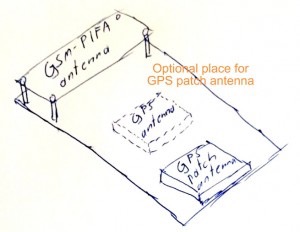
A picture tells a thousand words. I do not remember how often I have drawn such a sketch at a customer’s office. It is time to stop re-inventing the wheel and to create an online antenna proposal gallery.
In the photograph below the GSM / NB-IoT PIFA antenna is “flying” over the ground plane by sitting on a raised plastic platform. If the antenna shape has taken flight, then as mentioned earlier the metal chassis of a car, machine or sea conatiner will not interfere greatly with the antenna. The same antenna types can be used for dog collars, belts, surfboards or skies. Such GSM / NB-IoT PIFA antennas will radiate directionally. If the antenna is mounted on what is effectively water (human wrist, dog collar, ice etc. because a living being is mainly water), then it makes no sense to have an antenna that radiates omnidirectionally because radio waves and energy will just be wasted on absorption by the water. The metal or water in the vicinity would strongly influence an omnidirectional monopole antenna. An antenna which is above the ground plane does not “see” the metal of the container or the water and is therefore not affected. The drawback is that such unidirectional antennas are not available off-the-shelf. Such PIFA antennas need customisation.
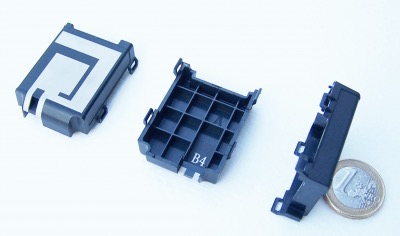
Last week a big package of antennas reached me. Step by step over the coming posts I will make the description of the antennas public.
The picture above shows an antenna for GSM and UMTS in mid-flight over the ground plane. The plastic enclosure or the antenna has an estimated size of 32 mm x 40 mm x 8 mm including the plastic clips. Such an antenna radiates directionally, perfect for our people or pet tracker. It is also a good approach if you plan to screw the tracking device onto metal surface (e.g., metal container or metal bin). The PIFA antenna has two metal contacts. One of the pins is the feeding line and the other one will be wired to ground plane. This shorting to ground is standard for inverted F antennas or planar inverted F antennas. The two contacts pins of the antenna will connect to spring-loaded contacts on the PCB. The pin on the left is positive for the feeding line while the pin on the right is negative and connected to the ground plane of the main board. Free space is REQUIRED with a gap of 3 – 5 mm at the point of the spring-loaded contacts or the pogo pin on the main board. An additional metal ground plane is not required for this design because this kind of antenna uses the whole main PCB as part of the antenna structure.
This antenna is originally designed for 3G cellular bands for a portable GPS tracker. The metal on the plastic enclosure is made by laser direct structuring (LDS). A customisation of the antenna structure is also possible. Such “flying” antennas can also be cut from white lead with a laser or water jet. Also etching is possible. The metal is then bent and fixed in place with a plastic holder. For a prototype, all you need is an empty can of the well-known energy drink mentioned above, a pair of scissors and some experience in antenna design. Simply cut it out, bend it, solder it in and then measure it. Even when soldered and bent, the antenna can still be reworked with the scissors. If too much is cut off, desolder the antenna and start again. When you have used up all the first cans of the energy drink, you take the red cans of the brown caffeinated lemonade from the USA. If you used up the red cans and get frustrated then do not hesitate to ask for customised antennas to harald.naumann (at) lte-modem.de .

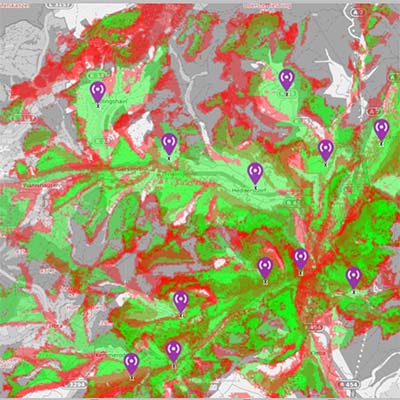
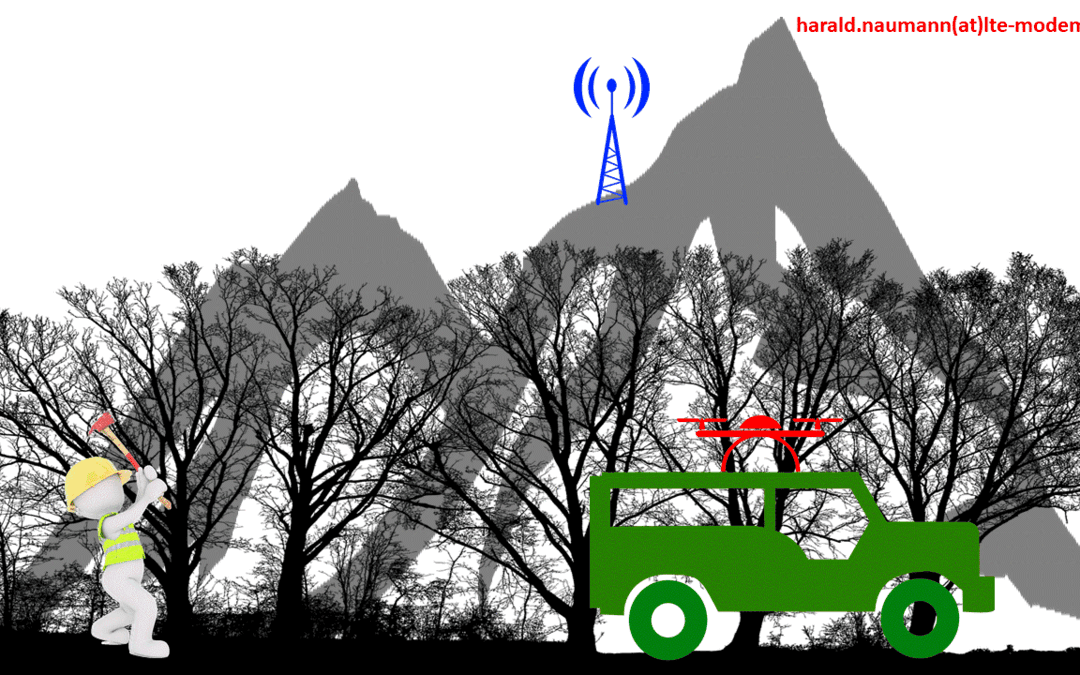
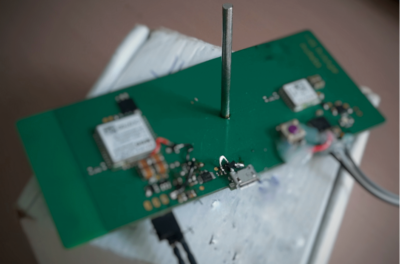
0 Comments